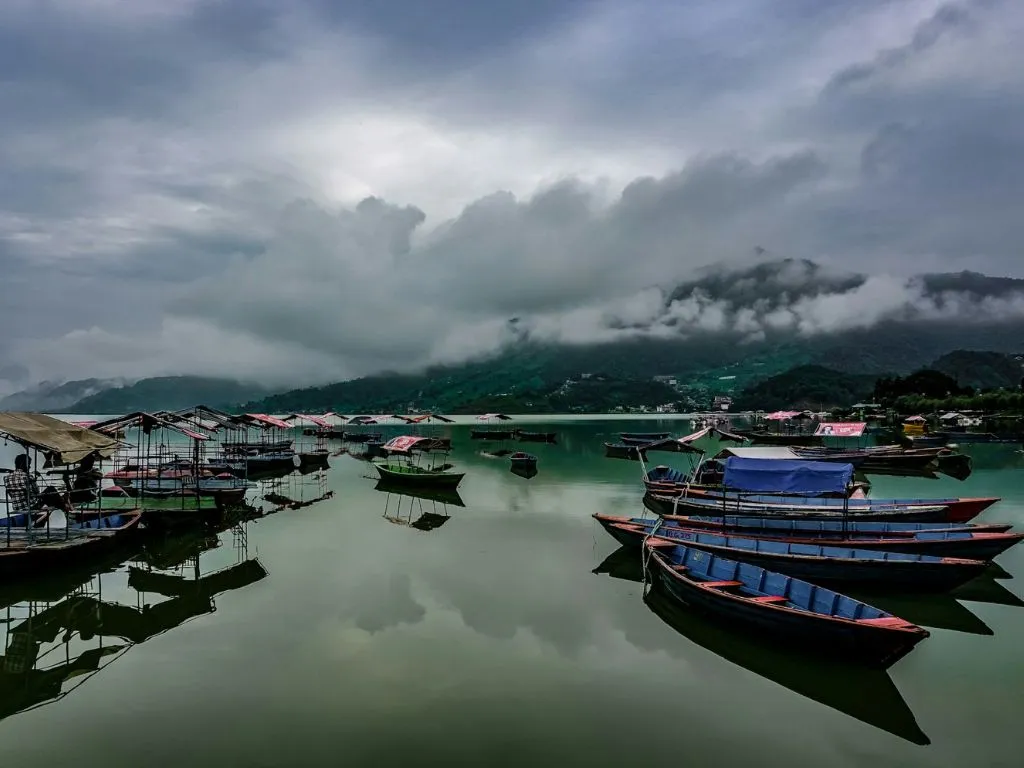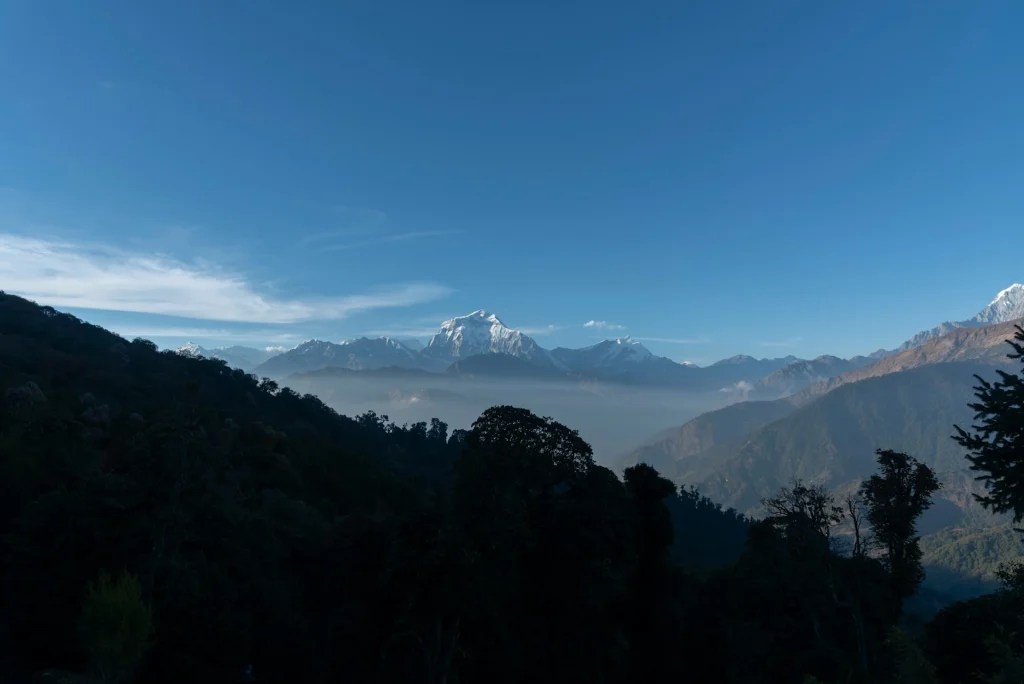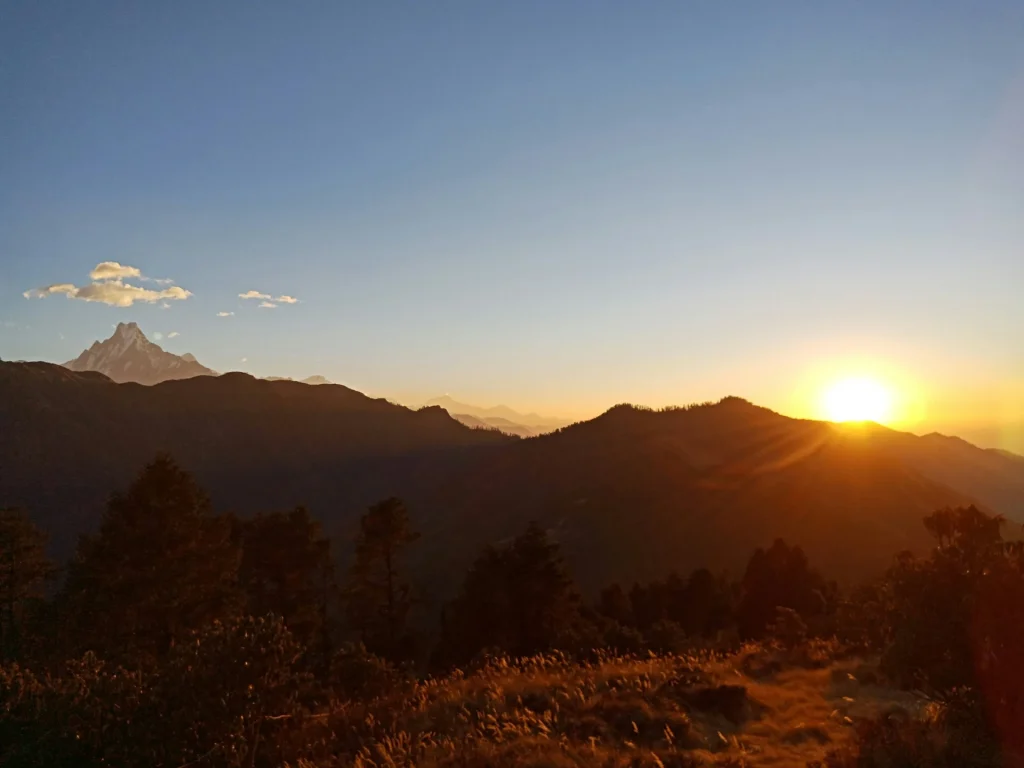Ghorepani Poon Hill Trek - Everything you Need to Know
Page Contents
Toggle
The Ghorepani Poon Hill Trek is one of the popular and easiest short treks in the Annapurna region of Nepal. The trek is perfectly well suited for trekkers hoping for a shorter and easier trekking adventure in Nepal. Ever since its establishment in the 1960s, Poonhill hiking has been a very desirable and one of the best trekking routes in Nepal.
Situated at an altitude of 3200m, the Ghorepani Poon Hill trek is famous for fascinating traditional villages, ethnic communities, rhododendron forests and magnificent 360-degree views of snowcapped mountains.
Poon Hill is a famous viewpoint or hill station and is the main highlight of the trek located on the border of Myagdi District and Kaski District in Gandaki Province of Nepal. Mountains such as Annapurna I, Dhaulagiri, Annapurna South 7,219m, Annapurna II, Annapurna III, Dhampus peak, Hiunchuli, Dhulagiri II, and many other tall peaks can be seen from here.
The 5 Days Ghorepani trek itinerary starts from Nayapul, near Pokhara, passing through Tikhedhunga, Ghorepani, and Tadapani, before ending in Ghandruk. Each day involves moderate walking, with ample time to enjoy the scenery and interact with locals.
The best time to do the Ghorepani Poon Hill Trek is during the spring (March to May) and autumn (September to November) seasons. These months offer clear skies, stable weather, and vibrant landscapes.
The trek is considered easy making it accessible for beginners. The well-marked trails and gradual ascents are suitable for those with basic fitness levels, although some steep sections require stamina.
Talking about the permits you will need the Annapurna Conservation Area Permit (ACAP) and the Trekkers' Information Management System (TIMS) card to embark on this trek. Proper packing is essential for the trek. Pack light but bring essentials like warm clothing, a good pair of trekking shoes, a rain jacket, and a sleeping bag. Don’t forget your camera to capture the incredible views!
Teahouses along the trail provide simple yet hearty meals, with accommodations ranging from basic lodges to more comfortable teahouses, offering a cozy place to rest after each day’s trek.
Trek Facts
- Difficulty: Easy
- Max Elevation: 3,210 m / 10,529 ft
- Best Time: Mar, Apr, May, Sept, Oct & Nov
- Transportation: Flight & By Road (Private / Public Vehicle)
- Trek Duration: 5 Days
- Accommodation: Hotel / Teahouse
- Per Day Walking: 5 - 6 Hours
- Trek start and End Point: Pokhara
Ghorepani Poon Hill Trek Highlights
- The warm hospitality of Gurung communities.
- Uncover unique Nepalese traditions and cultures.
- Encounter a wide range of flora and fauna.
- Witness beautiful streams, cascades, and suspension bridges.
- Majestic sunrise viewpoint at Poon Hill.
- A glimpse of traditional Nepalese Lifestyle.
- Explore the Annapurna Conservation Area, the largest Protected Area in Nepal.
- Ascend and descend the popular stone stairs of Ulleri village.
- Walking through the lush forests and scattered Gurung settlements.
Ghorepani Poon Hill Trekking Overview
Ghorepani Poon Hill Trek Detailed Itinerary - 5 Days
Day 1: Pokhara to Nayapul and Trek to Tikhedhunga (1,495 m / 4, 905 ft).

Day 2: Trek from Tikhedhunga (1,495 m / 4, 905 ft) to Ghorepani (2874 m / 9429 ft).

Day 3: Ghorepani (2874 m / 9429 ft) to Tadapani (2,620m / 8595 ft). Morning hike to Poon Hill (3,210 m/ 10,530 ft).

Day 4: Tadapani (2,620m / 8595 ft) to Ghandruk (2,012 m / 6,601 ft).

Day 5: Ghandruk to Nayapul. Drive back to Pokhara.
What is the Difficulty Level of the Ghorepani Poon Hill Trekking?

The Ghorepani Poon Hill Trek difficulty is considered easy, with well-marked trails and manageable ascents. While the trek is suitable for beginners, some parts can be challenging due to steep climbs, especially during the ascent to Poon Hill. Proper preparation and fitness are recommended for a more enjoyable experience.
You still have to be physically fit for the trek because of the 3000 m ascent that you reach over 2 days.
When is the Best Time to Trek to Ghorepani Poon Hill?
The best time for Ghorepani Poon Hill Trek is Spring (March-May) and Autumn (September – November) seasons. These are the peak seasons for the trek.
The days during March to May are warm and sunny in lower-altitudes. However, as you reach higher-altitude temperature can be little cold in morning and evening. You can see vegetations blooming during this season and Rhododendrons are one of the main highlight of the trek. Autumn seasons from September to November is another best time for Poon Hill trek. As a result, the trails will be very crowded during this time. The weather during this season is clear with perfect views of the mountains throughout the trail.
For more detailed season breakdown, you can check the guide on best time for Ghorepani Poon Hill Trek.
What are the Permits for the Ghorepani Poon Hill Trek?
Trekkers Information Management System (TIMS).
Annapurna Conservation Area Permit (ACAP).
What to Pack for the Ghorepani Trek?
The Ghorepani Poon Hill trek can be fairly categorized as an 'easy' trek and it is therefore possible to pack quite lightly. Some of the important things you should carry are two pairs of pants, 2-3 thermal tops, 3-5 pairs of socks and underwear, a waterproof jacket, good hiking shoes, a reusable water bottle, toilet paper, sunglasses, sunscreen, a basic first aid kit and snacks.
It can get cold at night, particularly at higher altitudes, so you should also pack warm layers for sleeping in, however, sleeping bags and towels are generally unnecessary as tea houses will provide both bed linen and towels. In addition, bring cash as there are no ATMs on the mountain.
To know more about the packing list, read my comprehensive packing list for the Ghorepani Poon Hill Trek.
Cultural Experiences in the Ghorepani Poon Hill Trek
One of the most remarkable aspects of the Ghorepani Poon Hill Trek is the opportunity to interact with the Gurung people. As you trek through villages like Tikhedhunga and Ghorepani, you’ll be welcomed with warm smiles and hospitality that make you feel like part of the community. The Gurung people, one of Nepal’s many ethnic groups, are known for their kindness and strong sense of community.
As you trek through the Ghorepani region, you’ll notice a blend of Buddhism and Hinduism in the daily lives of the people. Mani walls, prayer flags, and small stupas are common sights along the trail, reminding you of the deep spiritual connection the locals have with the land.
In Ghorepani, you might hear the soothing sounds of prayer wheels spinning, and the sight of local people stopping to pay their respects at shrines. It’s a reminder that the Himalayas are not only a physical challenge but a spiritual one as well.
The accommodation on the Ghorepani Poon Hill Trek is not your typical hotel stay—this is where the cultural immersion truly begins. You’ll spend your nights in traditional teahouses, often run by local families. These simple, yet cozy lodgings give you a firsthand look into Nepalese life. While you sit around the fireplace, chatting with your hosts and fellow trekkers, you’ll gain insight into the daily struggles and joys of living in these remote villages.
Foods and Accommodation on the Poon Hill Trek
Ghorepani Poon Hill short trek is a popular and well-established trekking in Nepal. The food on this trek is better as you will find a wide range of food items on the menu, including Western, Indian, Chinese, and Nepali food.
You can get options of pancakes, a variety of porridge, cereals, soups, pasta, macaroni, pizzas, momos and much more. Dal (utensils) and Bhat (rice) vegetarians and non-vegetarians are very popular nepali cuisines in the trek and are mostly preferred.
Tea, coffee, and a variety of soups are widely available at the teahouses. Garlic soups are the best for higher-altitude treks in Nepal.
On the hike, you frequently stay in teahouses or small lodges, which offer basic facilities. Accommodations on the Ghorepani Poon Hill trek are good and comfortable.
You will find cozy rooms available in the majority of teahouses. Most rooms have twin beds, with warm quilt and a few have attached bathrooms. But on the whole, you have to stay in the teahouses with shared bathrooms. Make sure you eat in the teahouse you sleep in.
Internet and Communication on the Trek
Electricity and Water
Cost Breakdown of the Ghorepani Poon Hill Trek
Permit Cost
Permits are mandatory for the trek. You need to obtain 2 permits for the poon hill trekking - TIMS and ACAP. The permit cost depends on the country you are from.
TIMS card
- The cost of a TIMS card for SAARC citizens is NPR 1000 or USD 7.46 per person.
- The cost of a TIMS card for foreign nationals is NPR 2000 or USD 14.93 per person.
- No TIMS card is required for Nepali citizens.
ACAP
- The cost of ACAP for SAARC citizens is NPR 1000 or USD 7.46 per person.
- The cost of ACAP for foreign citizens is NPR 2000 or USD 14.93 per person.
- The cost of ACAP for Nepali citizens is NPR 100 per person.
- ACAP is free for a child below 10 years as a child discount.
Food and Accommodation Cost
A Travel agency will take care of your food and accommodation. However apart from the package, you can pay by yourself and get the meal you want throughout the trek. So, carry some cash in Nepali currency even if you are trekking with a travel agency.
If you are trekking without a travel agency, I would suggest, that, if possible, allocate USD 30-40 per person per day for food and accommodation.
Cost of Guide and Porter
The cost of hiring a guide will start from NPR 3000 or USD 23 per day. However, an experienced guide will charge more than NPR 4000 or USD 30 per day.
If you are planning to hire a porter, makes sure to hire in Kathmandu or in Pokhara. If you decide on the trail to hire someone, the cost will be much higher. Expect to pay NPR 2600 or USD 20 per day in Kathmandu or Pokhara.
FAQs
The Ghorepani Poon Hill trek is a circular trekking trail that begins and ends in Nayapul and covers a distance of around 38 km / 23 miles. The trek is 5 - 7 days long and can be extended up to 10 days depending on your preferences.
After the new policy was implemented on April 1, 2023, all foreign trekkers will be required to hire a licensed guide to hike the majority of the routes in Nepal including Ghorepani Poon Hill Trek.
You can find a licensed guide through trekking agencies in Kathmandu and Pokhara. The average price is US$20 per day for a porter and US$25 per day for a guide.
The Poon Hill Trek is at an altitude of 3,210 meters. However, there is rarely a chance of getting altitude sickness in the trek, so it is still necessary to obtain travel insurance. This is to ensure your safety in the trek.
Engaging in hiking through verdant forests and rugged alpine terrain is an extraordinary endeavor. You might face any accidents and emergency circumstances in the trek. Ensure that your plan encompasses both medical expenditures and helicopter rescue.
Mountains seen from the top of Poon Hill are Gurja Himal (7,193 m / 23,599 ft), Dhaulagiri (8,167 m / 26,795 ft), Dhampus (6,012 m / 19,724 ft), Nilgiri (7,061 m / 23,166 ft), Annapurna South (7,219 m / 23,684 ft), and Himchuli (6,441 m / 21,132 ft).
Ghorepani Poon Hill Trek takes you to the highest altitude of 3,210 m / 10,530 ft from sea level. Poon Hill is the famous viewpoint for the sunrise and sunset experiences.
No, there aren’t any tea houses or lodges in Poon Hill. However, trekkers stay in Ghorepani and hike for about 45 minutes to reach the top of the hill. But you can find a small shop run by the local community center where you can get tea and some light snacks.
